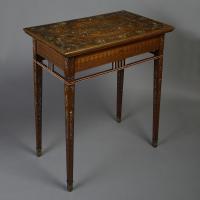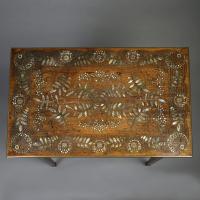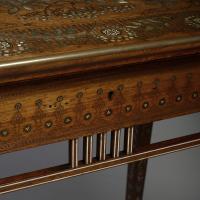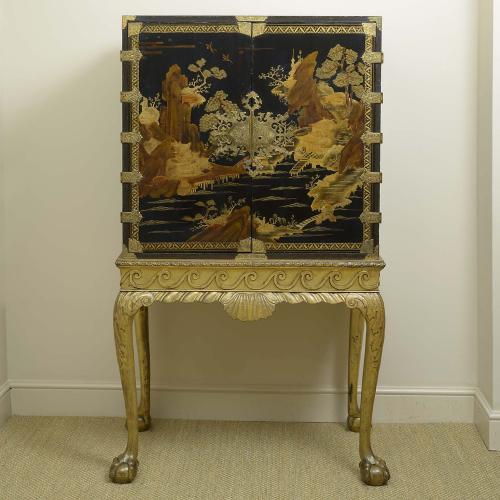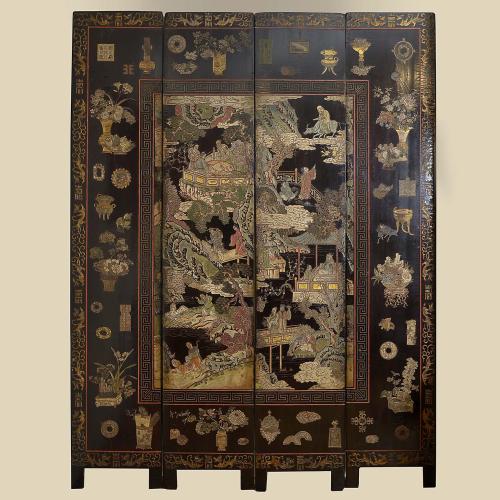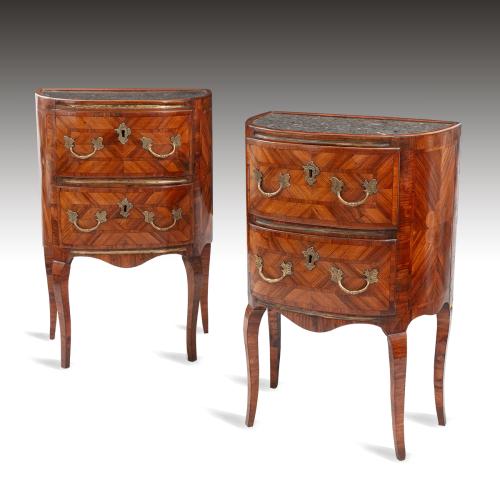
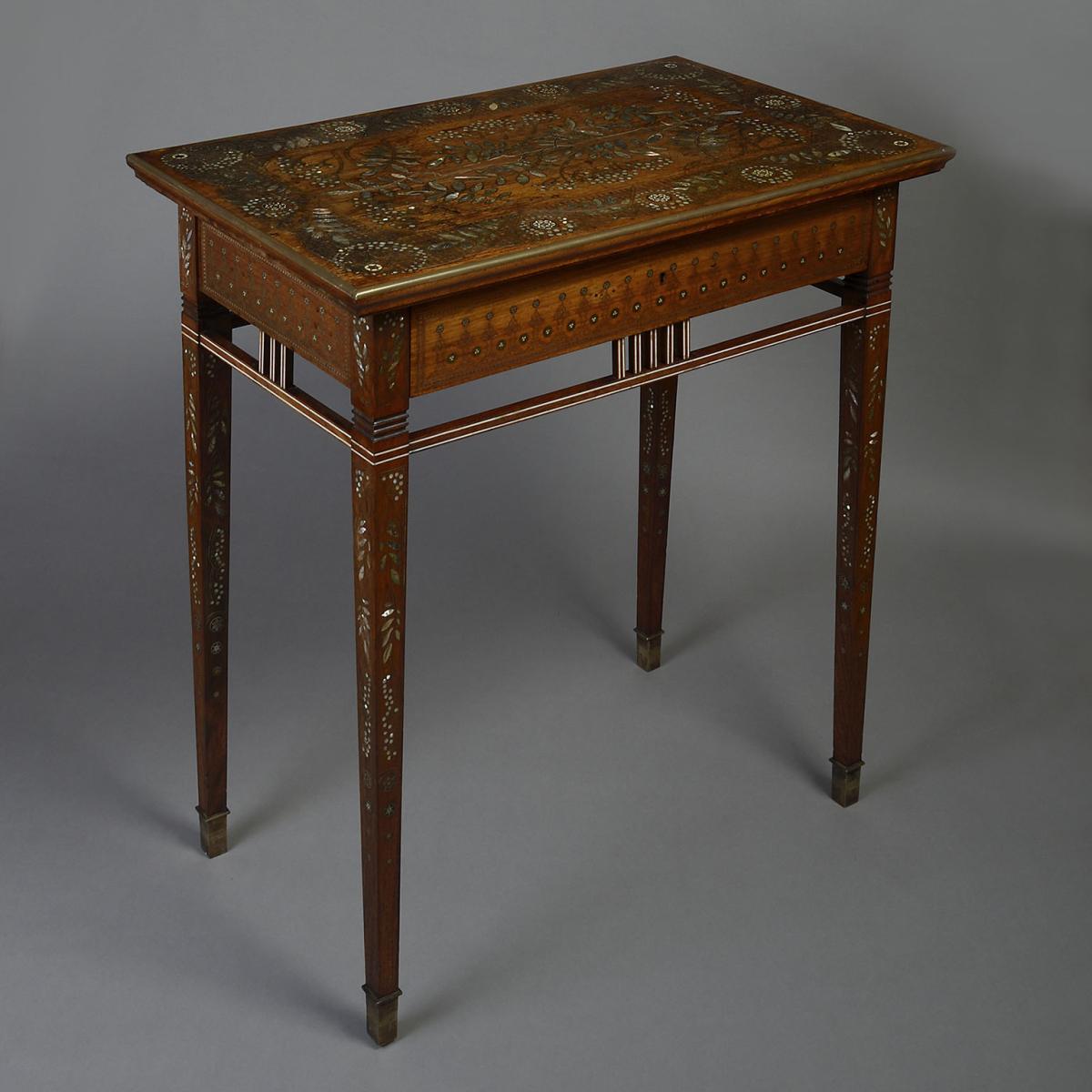
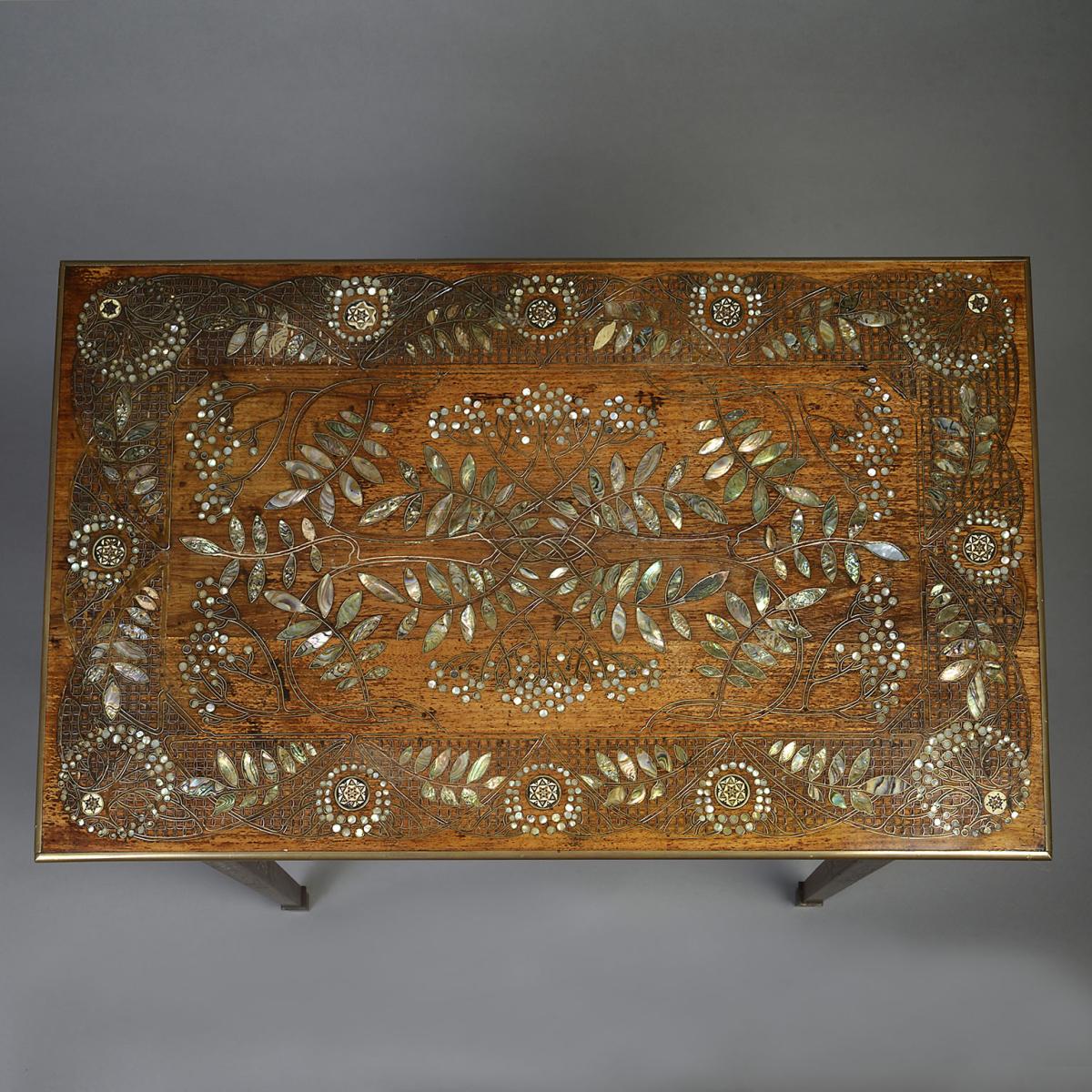
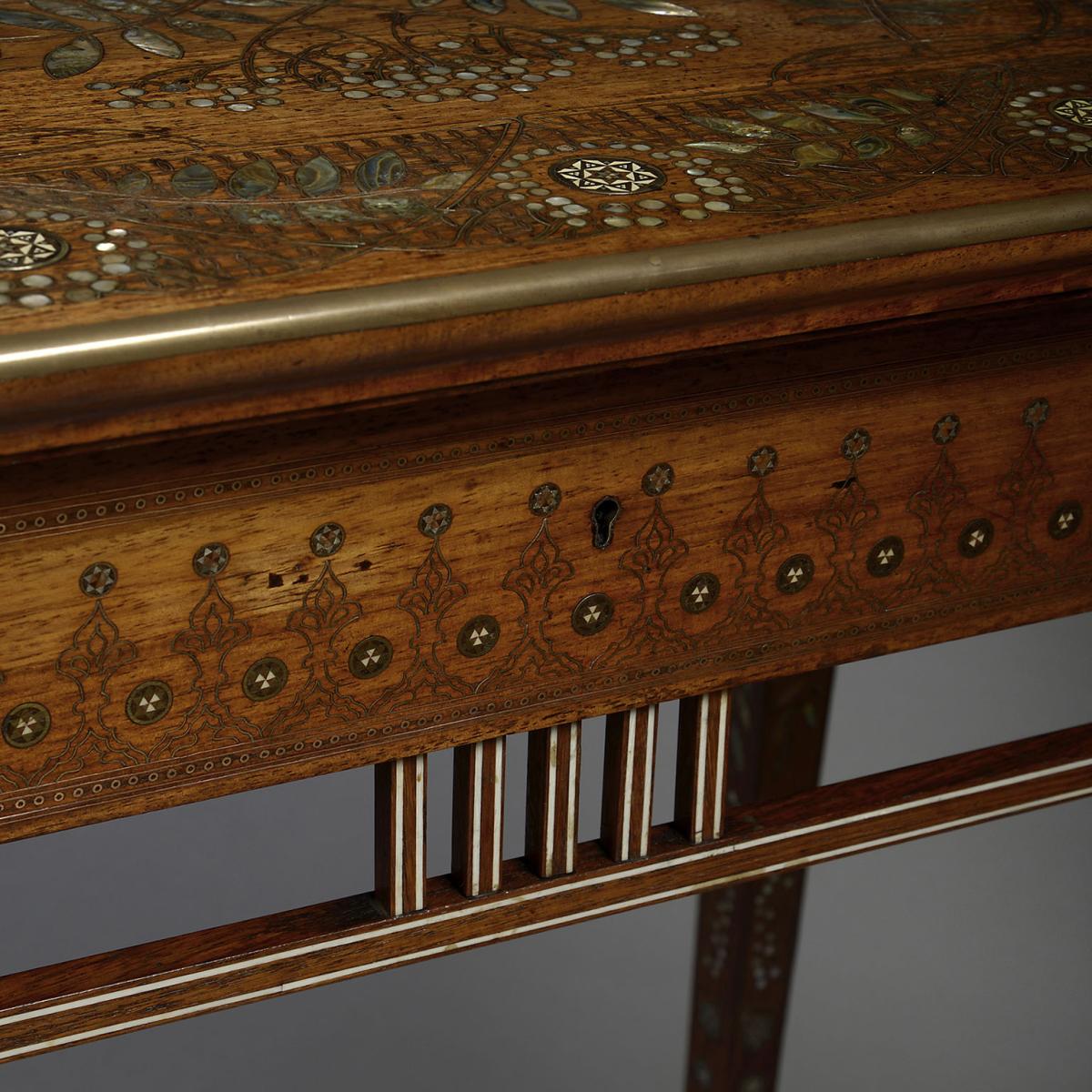
This object is eligible for a Certificate of BADA Provenance
The BADA Standard
- Since 1918, BADA has been the leading association for the antiques and fine art trade
- Members are elected for their knowledge, integrity and quality of stock
- Our clients are protected by BADA’s code of conduct
- Our dealers’ membership is reviewed and renewed annually
- Bada.org is a non-profit site: clients deal directly with members and they pay no hidden fees
AN ARTS AND CRAFTS INLAID PADOUK CENTRE TABLE OF ISLAMIC INFLUENCE
Probably American circa 1900
This exquisite and jewel like table is extensively inlaid with abalone, gilt metal and copper and bone stringing. The inlaid rectangular top depicts meandering stylised mistletoe with a wide border of copper wire motifs interspersed with Islamic style roundels, further branches of mistletoe and circles of berries. The branches are formed by double lines of gilt metal stringing, the leaves and berries formed with abalone while the roundels are inlaid with bone. The frieze which encloses a single drawer is inlaid on all four sides with a series of Islamic six-pointed roundels with copper strung borders, above a continuous double bone strung stretcher united at the centre by three vertical bone strung splats. The four tapering legs which are also inlaid on all four sides with continuous sprays, have distinctive triple incised reeded capitals level with the frieze splats. The gilt metal shoes also have incised reed decoration.
The exceptional cabinetwork points to an important work shop. The dovetailing and detailed attention to the drawer construction, enabling it to be side hung without the need for a shelf, relate to illustration 94 in Herter Brothers published by Harry N. Abrams. Inc in association with the Museum of Fine Arts, Houston. The drawer front is padouk while the laminated linings appear to be yellow poplar veneered onto Oregon pine/ Douglas fir
The unique treatment in forming the mistletoe branches with double wire stringing strikingly apes those in Walter Crane’s ‘Flower Fairies’, a group of six tiles probably
made by Pilkington in 1900. Walter Crane visited North America in the late 1880s and had a profound influence on the Arts and Crafts movement there.
Lit. Herter Brothers Published by Harry N. Abrams in association with the Museum of Fine Arts Houston illustration 94
William Morris and the Arts and Crafts Movement by Linda Parry published by Portland House New York plate 23
This object incorporates old ivory and has been registered with Defra
Stock number
17983The BADA Standard
- Since 1918, BADA has been the leading association for the antiques and fine art trade
- Members are elected for their knowledge, integrity and quality of stock
- Our clients are protected by BADA’s code of conduct
- Our dealers’ membership is reviewed and renewed annually
- Bada.org is a non-profit site: clients deal directly with members and they pay no hidden fees


